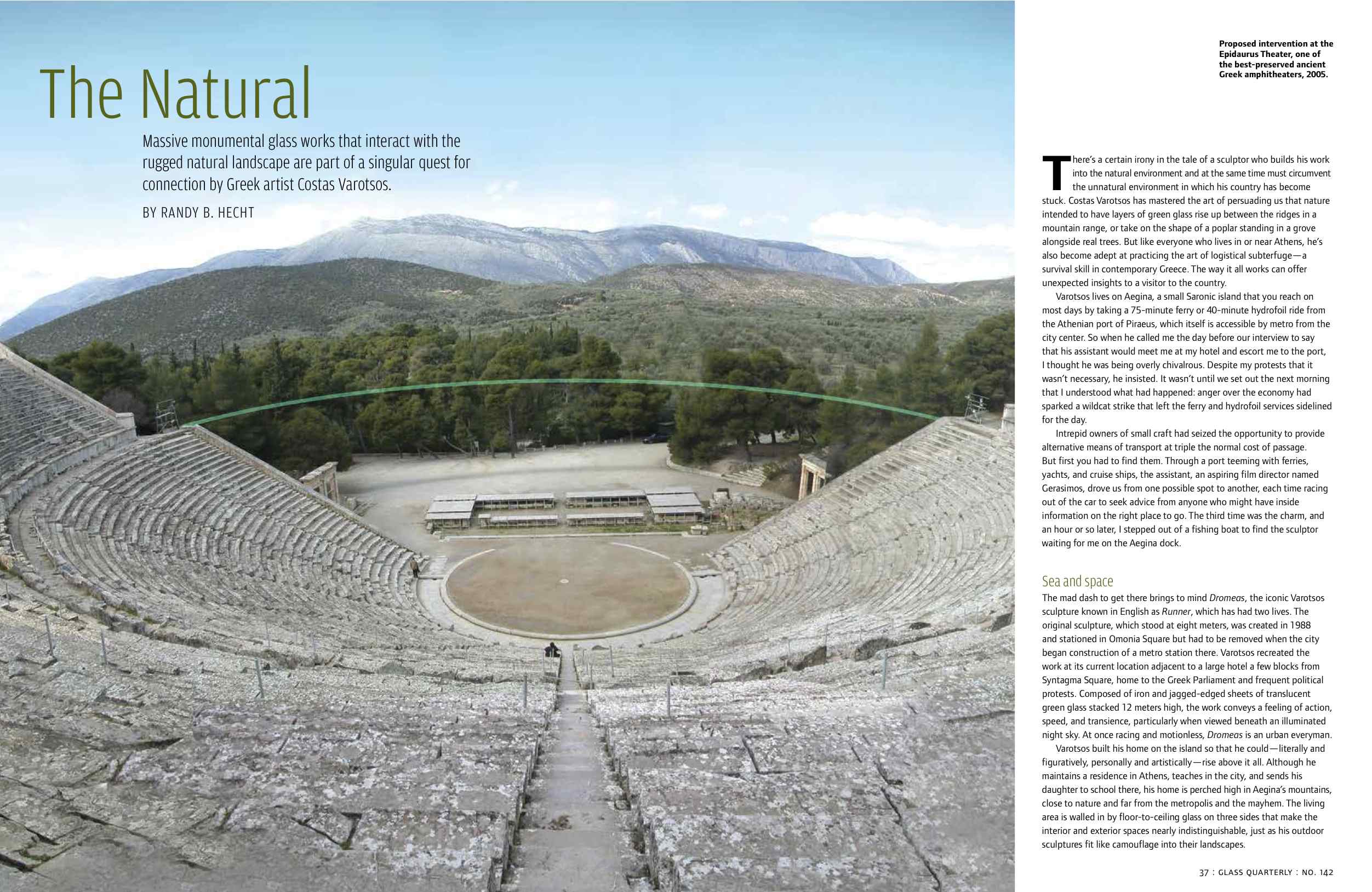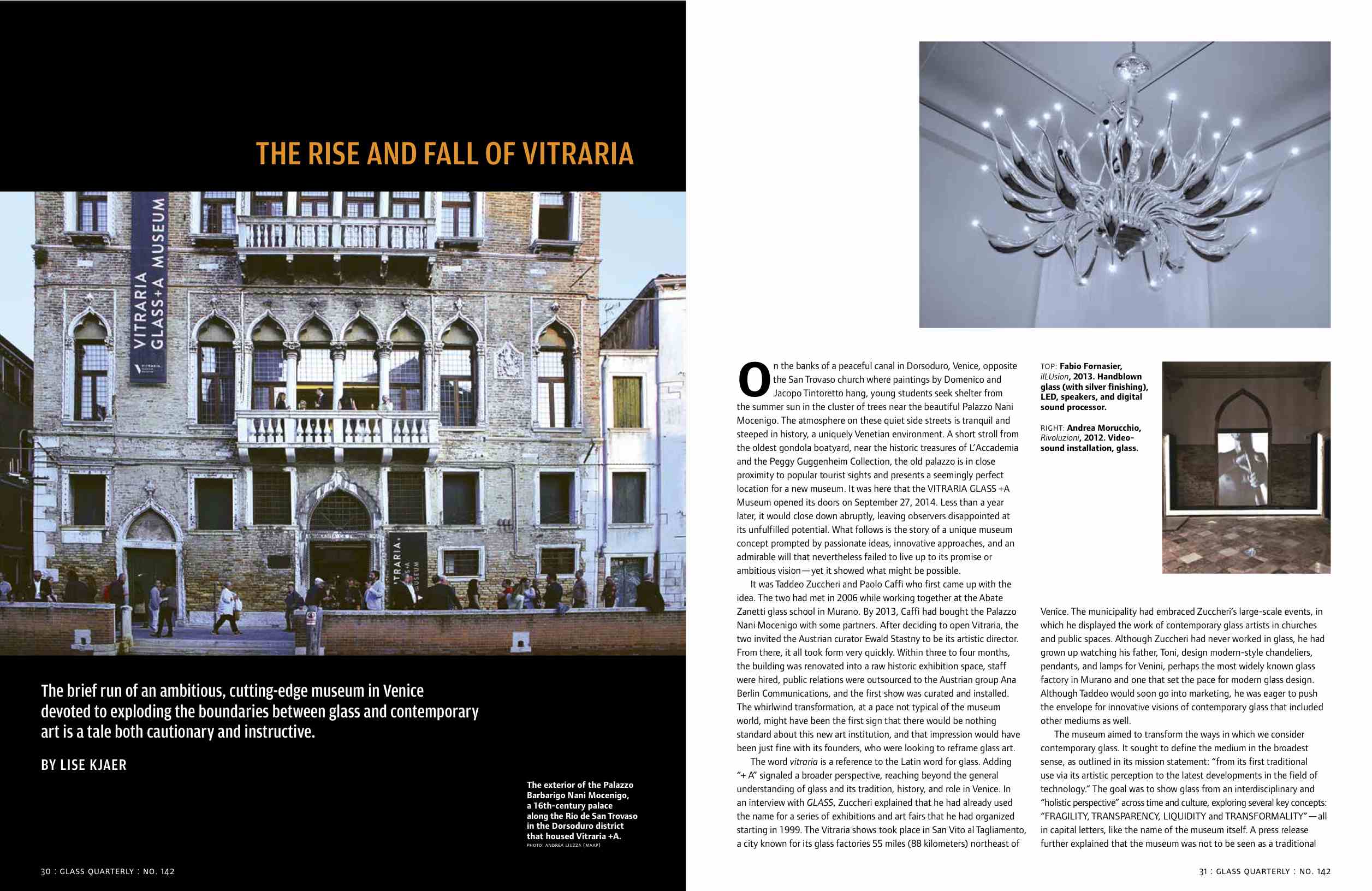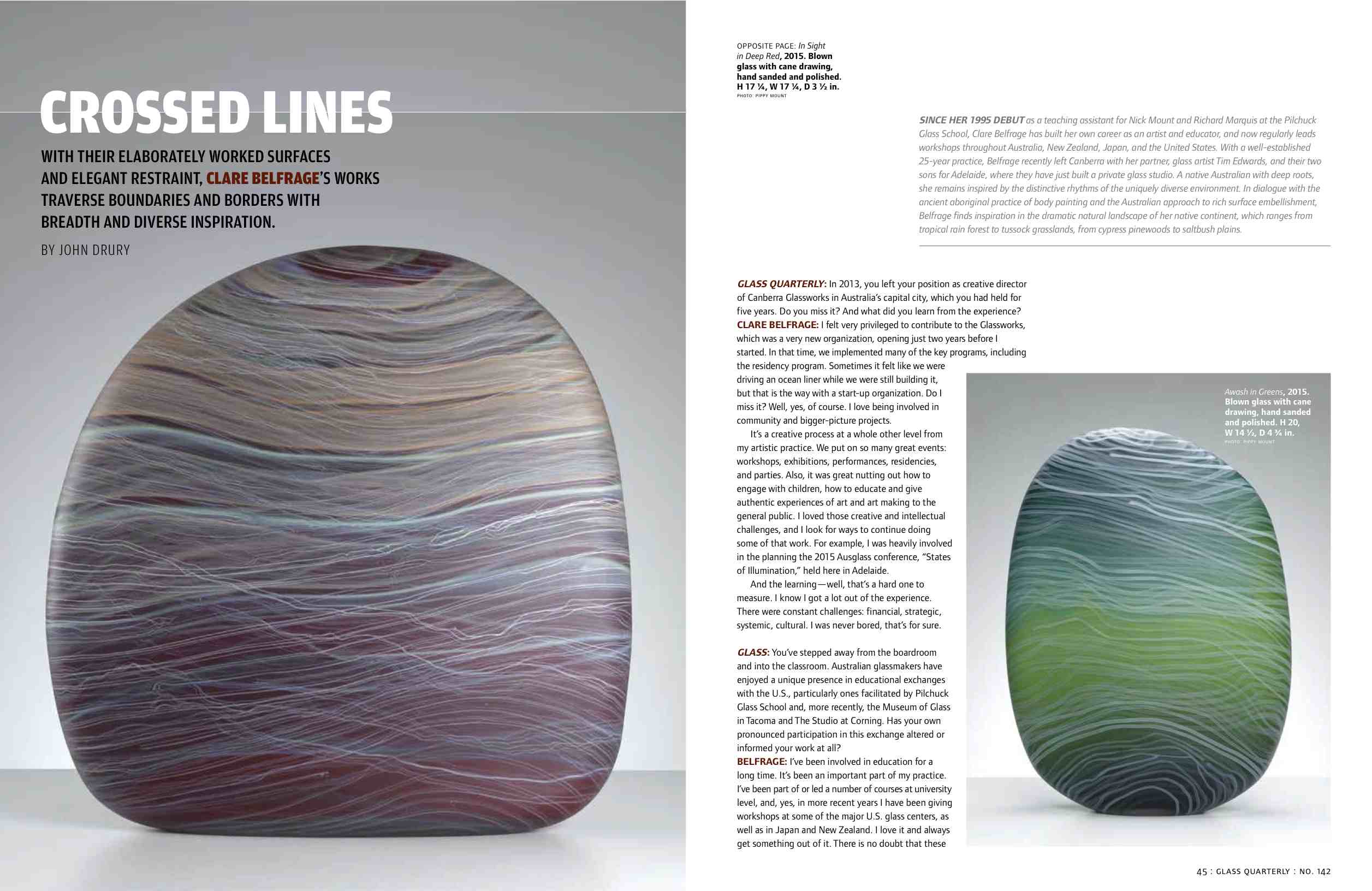The Spring 2016 edition of GLASS: The UrbanGlass Art Quarterly (#142) is hitting newsstands and subscriber mailboxes at a moment when virtual reality is poised to go mainstream. Devices that turn your cell phone into a headset are already shipping to curious consumers, the Sundance Film Festival highlighted interactive experiences in an exhbition called "New Frontiers," and even an organization as august as The New York Times has been releasing online reports designed to envelop users in a digital experience. More complex headsets and interactive accessories are getting ready to ship. All of the buzz about virtual reality inspired us to remind the world of the rich terrain already mined by visual artists, who've used installations, architecture, and sculpture that create new realities through repeat reflectivity, partially mirrored glass surfaces, and cultivated perceptual shifts that play with optics to alter our relationship to the world around us, and force us to reconsider our place in it.

In the cover article by GLASS contributing editor William Ganis, historic work such as the 1966 Mirrored Room by Lucas Samaras to Dan Graham and Larry Bell installations to more recent work by Thilo Frank indicate that expanding our visual consciousness has been a timeless pursuit, one Ganis traces back to the mosaic-makers of the Byzantine era.

Greek artist Costas Varotsos uses glass on a monumental scale to transform the environment, in his case making works that heal the landscape, reference its splendor, and gently intervene to emphasize the horizon or the architecture of rocky cliffs. For an in-depth feature article on Varotsos, GLASS correspondent Randy B. Hecht travels to the Greek island of Aegina, where the artist lives and works, to pen a rich portrait of this ambitious visionary who embraces glass as the perfect material for epic duets with nature that are extraordinary in scale.

GLASS correspondent Lise Kjaer takes stock of the ambitions and ultimate demise of Vitraria +A, a contemporary art museum with a focus on glass as both metaphor and a material. With an embrace of international artists using glass as well as mixed media and performance, the short-lived institution strove to differentiate itself from the other glass-focused institutions in Venice by its unconventional approach. In interviews with exhibiting artists, the chief curator, and key founder, Kjaer documents what was accomplished in the year of this remarkable institution’s existence.

Finally, our newest contributing editor John Drury sits down with Australian native Clare Belfrage, who shares the nuances of how her country and its unique ecosystems provide inspiration for her richly adorned abstracted vessels with swirling and intricate line patterns. Belfrage cites indigenous Australian painters, as well as the wildly varied natural environment that offers both lush rain forest and vast unforgiving plains, as sources of her boundary-crossing body of work.
All this plus six exhibition reviews, the latest news from the glass world, and a back-page essay on the Art Basel Miami Beach circus and how glass fits in.
Not a subscriber?



